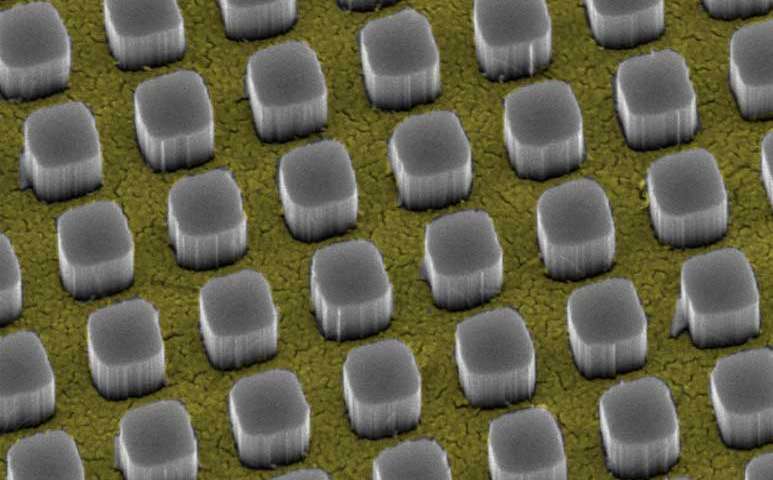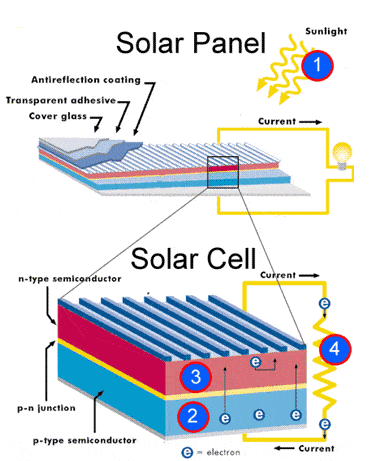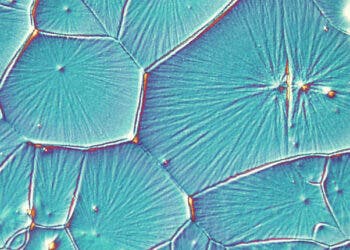There’s an inherent flaw in solar cells: the metal wiring that’s quintessential to harnessing the electrons reflects the incoming light, acting like a mirror. Now, must people would brush off this issue and leave it like that. It’s a necessary trade off. But a team at Stanford University devised an elegant chemical technique that basically hides the wiring with silicon, away from the light while preserving energy harnessing. Metal wires cover 5 to 10 percent of a solar cell’s surface. Now, in the same area more light can be absorbed, hence more electricity generated which jumps the efficiency. Of course, this also means cheaper solar panels — if only the chemical technique is covered by the recurring costs of increased efficiency.

“Using nanotechnology, we have developed a novel way to make the upper metal contact nearly invisible to incoming light,” said study lead author Vijay Narasimhan, who conducted the work as a graduate student at Stanford. “Our new technique could significantly improve the efficiency and thereby lower the cost of solar cells.”
The researchers modeled a typical solar cell with a thin film of gold 16-nanometer-thick atop a flat sheet of silicon. Tiny, itsy bitsy holes were perforated on the whole surface, but to the naked eye the gold layered object still looked like a shiny mirror. Analysis showed the hole-ridden gold film covered 65% of the silicon’s surface, reflecting 50% of the incoming light. So far so good. That was predictable.
A typical solar cell – wiring is both on top and back.
Narasimhan and colleagues then immersed the object in a solution of hydrofluoric acid and hydrogen peroxide. What happened next was the silicon started popping up through the holes, like pillars. These grew up to 330 nanometers in height, transforming the once golden surface into a dark red. That alone indicated the surface wasn’t reflective anymore. Narasimhan compares the silicon pillars to a colander in your kitchen sink
“When you turn on the faucet, not all of the water makes it through the holes in the colander, ” he said. “But if you were to put a tiny funnel on top of each hole, most of the water would flow straight through with no problem. That’s essentially what our structure does: The nanopillars act as funnels that capture light and guide it into the silicon substrate through the holes in the metal grid.”
The metal contacts still work great. Through trial and error, the Stanford researchers eventually reached an optimal design where nearly two-thirds of the surface can be covered with metal, yet the reflection loss is only 3 percent. This not only means that manufacturers can hide metal contacts – they can include more of it since it helps with efficiency! The researchers estimate a conventional 20% solar panel can up its efficiency to 22%, a huge gain. Multiply that by millions of solar panels and you’ve got a massive energy gain and cost reduction.
What about the gold? Yes, gold is expensive but Narasimhan says the technique works with silver, platinum, nickel and other metals. “We call them covert contacts, because the metal hides in the shadows of the silicon nanopillars,” co-author Ruby Lai. said. “It doesn’t matter what type of metal you put in there. It will be nearly invisible to incoming light.”
“With most optoelectronic devices, you typically build the semiconductor and the metal contacts separately,” said Cui, co-director of the Department of Energy’s Bay Area Photovoltaic Consortium (BAPVC). “Our results suggest a new paradigm where these components are designed and fabricated together to create a high-performance interface.”
A model gold sheet is, of course, different from an actual solar cell. Looking forward to seeing this work applied to an actual working cell.
Reference: Vijay K. Narasimhan et al. Hybrid Metal–Semiconductor Nanostructure for Ultrahigh Optical Absorption and Low Electrical Resistance at Optoelectronic Interfaces, ACS Nano (2015). DOI: 10.1021/acsnano.5b04034







